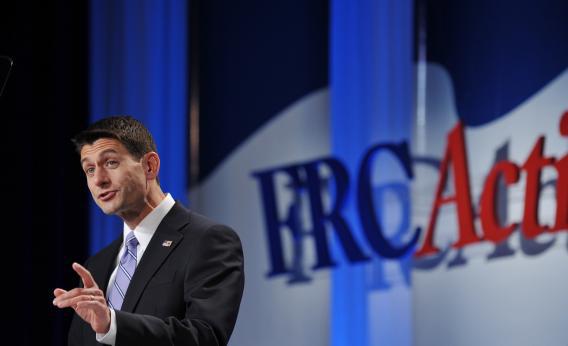Alec MacGillis’ piece on how Paul Ryan got such a high reputation by basically just being a hard-working, orthodox, conservative Republican House member is a great read, but I particularly liked the math theme:
“There are very few people who have the ability to understand the math in budgeting and the ability to articulate it,” [former Congressman Mark Newman] told Ryan. “Those are two skills that don’t often go together.”
That’s the only reference to “math” in the piece, but the phrases “numbers” and “the numbers” recur several times. And that captures one of the most frustrating things about Washington-style budgeting—there are tons of numbers but almost no math, and yet the barely extant math is considered extremely difficult to master.
The math in question, however, consists of basically stuff you should have mastered in eighth or ninth grade. You add stuff up, multiply, and sometimes solve for x. There’s no logarithms, no calculus, nothing fancy. And I actually think it’s a huge problem because it means that the forecasts can’t be presented properly. When you’re trying to say something about the future, you really want to offer some kind of probability distribution. Not “the Social Security Trust Fund will be exhausted in 2037” (or whenever), but “here’s a model showing the distribution of possible outcomes according to our assumptions about key independent variables.” And for Social Security the actuaries actually do provide such a projection near the back of the annual Trustees Report, where it’s invariably ignored by journalists and politicians who don’t want to be bothered. Which, to be clear, highlights the source of the problem. The people who work on staff at Congressional Budget Office, Office of Management and Budget, Treasury Department, and other agencies have the capacity to present much more mathematically sophisticated accounts of what they think is going on. But the very naïve charts and graphs of a Paul Ryan are considered so über wonky by Washington standards that there’s no reason to do anything more sophisticated.
This winds up making a hash of the whole thing. There’s no point in publishing forecasts without publishing some kind of estimate about uncertainty and ranges of plausible outcomes, but that’s basically what all our budget projections in Washington do.
